You know those rogue waves everyone talks about? The real monsters, big as houses with breaking crests way higher than the mast. And steep – so steep there’s no escape. The boat is going to be knocked flat.
I found one.
Two hundred miles north of the Canaries on October 22, inbound from Falmouth for Las Palmas de Gran Canaria. Six o’clock in the morning BST – still dark, and I was asleep, having gone to bed at midnight, setting alarms for 90 minutes.
It was blowing 28 – 33kts out of the SSW, and Samsara was double-reefed and making 5-6kts hard on the wind in not quite in the right direction. That was the reason for the 90-minute alarms. I wanted to be sure that if the wind changed, I didn’t go charging off in a new and entirely inappropriate direction. At 0130, nothing had changed. At 0300 nothing had changed – although the barometer had started to rise after its fall from the previous afternoon. I reckoned I could set the alarms for three hours. So it didn’t look as though we were going to get a full gale like the one of Lisbon. But what I did not know was that back in the UK, they were calling it Storm Babette.
At 0330, I was fast asleep (and dreaming of the legendary Portuguese Trades) when then this happened.

That’s my track on the Navionics app – at 0330, just after I went back to bed. The boat was being steered by the Aries windvane which, faithful as ever, followed the wind round what in was a very, very sudden wind shift of 30°. This was good news. Now we were heading in the right direction.
Actually, it was partly good news. The bad part is that if you look up “rogue waves” or “extreme waves” or “exceptionally steep waves,” you will find that when two wave systems intersect at an angle of 30°, that is when the monster wave can be generated. Don’t ask me why. It’s all to do with hydrodynamics and highly technical. Ordinary sailors wouldn’t understand.
But this is what it did to the inside of Samsara’s cabin.
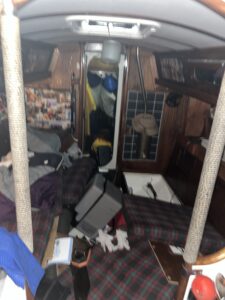
The first I knew was that I woke up but couldn’t get up because there was a lot of stuff on top of me. Also, there wasn’t any floor. Just a lot of water.
Thinking about it now, I’m surprised how calmly I accepted the situation. My first concern was that I wasn’t wearing any trousers. After three o’clock I didn’t think I’d be getting up in a hurry and it’s much more comfortable without…
Then I noticed the rechargeable light that hangs from the forehatch was on – except I couldn’t see it – just a flood of white light coming through the forehatch. Which was wide open. So, the first thing to do was close the forehatch. I always bolt it, but because it takes a bit of wiggling, I never bother to lock the bolt in position by turning it sideways into the little slot. Yet, somehow, that had come undone.
Then I turned back to the cabin and switched on a light. Seeing everything piled up in the middle like that, there could be only one explanation. We had suffered a knockdown.
I don’t think we’d been completely rolled because I had no sensation of being on the deckhead, but what had happened to the rig? That was the big question. I picked my way aft, noticing with some surprise that the big adjustable spanner was in the sink.
Outside, I found the sprayhood had been flattened, and we were hove to and riding quietly in a very big sea with 33kts on the wind speed indicator. The mainsheet had parted from the boom, which was now lying against the shrouds. Well, she could stay like that. There was no point in trying to fix the mainsheet if I had no idea where the tools had got to.
Normally, the tools live under the head of the starboard berth. There are four turn buttons to hold the lid down in the event of a capsize. Guess what? I hadn’t fastened them. I wasn’t expecting a capsize. The locker was pretty much empty. At least I knew where the big adjustable spanner was. Everything else, not so much.
The first thing to do was find my phone so I could photograph the chaos. I’m always wishing I had stopped to photograph dramatic moments. I‘m pleased to see that I was thinking clearly enough to photograph this one.
Then I started the big clear up. First, my pride and joy, the Alpicool fridge. I put it back, plugged it in. It didn’t work – but that was probably a simple connection problem. Then I put the bunk boards back so I could heap everything on top of them and get the floorboards down so at least I could walk about. The floorboards have pre-drilled screw holes so they can be secured against the possibility of capsize. But that’s where the spare beer lives, and they weren’t secured because I wasn’t expecting…
I never knew I had so many batteries. AA, AAA – there were batteries everywhere – including lodged in the handhold that runs along the sides of the cabin under the windows. There was sweetcorn in there too – and nuts, bolts and small screws.
Normally, these live in a large plastic box – a rather successful impulse buy from B&Q with little compartments for different-sized fastenings and small items which may come in useful one day. This thing had not burst open completely (I would still be sorting screws instead of writing this), but one catch had come undone just enough to fill the handhold on the other side of the boat.
Most peculiar was the storm jib, which lives right up in the forepeak – how did that end at the aft end of the saloon?
And the hatch over the log impeller. That was another odd thing. This hatch is under the shower grating. Now it was on top – the grating back in place. Piece by piece, item by item, I put everything back where it belonged (or at least where it will be out of the way until I get round to a proper sort out). Meanwhile, I had to deal with the outside. For one thing, I didn’t like the idea of the mainsail flapping itself to pieces.
First, how to get the boom back? Maybe I could haul it in with the preventer, which is permanently rigged to the end and made off within reach of the mast – but apparently, that too had been attached to mainsheet fitting, so was hanging loose.
In the end, I got the boat sailing under jib, lashed the helm down so that the backdraught kept the main off the shrouds, and I could get it down. But that still left the end of the boom swinging about out of reach. In the end, I tamed it by letting off the topping lift and stood ready with the stainless dog clip on the end of the bracing line. When the boom swung inwards, I snapped the clip onto the topping lift. Now I could get the boom in and braced and see what had given way. I remember being inordinately pleased with the way that went.
It turned out that 45 years of a stainless steel shackle wearing on the aluminium casting at the end of the boom was just too much. When I bought the boat five years ago, I replaced this with a soft shackle, but the damage had been done. It turned out that I didn’t need any tools. There were two other attachment points on either side for twin tackles, and the Dyneema shackle was just long enough to reach through both of them. Don’t you just love soft shackles?
Within 15 minutes, we had the main back up and the boat on course. At least the cockpit lockers hadn’t burst open.
Well, not without trying. The weight of warps, fenders and gash bags in the starboard locker had pulled the facing off the lid, so there would have been nothing to stop it all falling out. It seems only the number of gash bags blocking the way saved everything from being lost.
I did lose the piece of teak facing, though – as well as the nicely carved cover for the fuel cap. It would have been so easy to make up a safety line for it – and teak costs a fortune now the trade has been banned.
That was when I noticed what had happened to the toe rail. This, too, is teak. Or was. Now, about three metres of it was missing on the port side. For several days, I was at a loss to explain how this could have been ripped off – surely not the force of the water?
Ah yes, right in the middle was a fairlead and if a sheet got caught in that and then, with the weight of water in the sail…
Then there was the broken stanchion: The spinnaker poles are fastened to the stanchions. I don’t suppose that helped.
I was going to say how impressed I was to see the sails (the new Vectran sails from Crusader) had escaped unscathed – until it transpired that the weight of water falling onto the sail and ripping off the mainsheet had also caught the luff on the wrong side of the reefing horns. The sail tore – you can’t really blame it; the 10mm stainless bolt supporting the horns snapped too.
The sprayhood turned out to have one small broken fastening on the end of one of the struts, and the zips are apparently designed to burst open before the fabric gives way – thank you again, Crusader.
I stayed a long time in the cockpit, just watching the sea, not caring when a wave broke over my head – I couldn’t get any wetter, and the water was warm. But it was now nine o’clock, and I hadn’t put the breakfast oats in to soak before I went to bed (I think I had some idea that the motion would be easier in the early hours). Well, we know all about that, don’t we?
More seriously, the cooker had been swamped (again) and wouldn’t work. It took two days to get a very low flame out of one of the burners. Infuriatingly, the little electric kettle had packed up a couple of days before, and I was waiting for calmer weather to get out the multimeter and find out why.
In the end, breakfast was cold rice pudding out of the tin with the Nutella jar tucked into the corner of the berth beside me. That and two digestive biscuits with a small glass of rum (it had to be a small glass; the big one got smashed).
Other damage, since we’re on the subject: Two shelving units became detached from their fastenings – not because they contained anything particularly heavy – it must have been just the impact.
The cockpit grating broke.
The fridge is definitely kaput (the instructions say it must not be inverted.)
The low-pressure pump for the watermaker is making a strange noise and not producing the required pressure. It has to be below the level of the high-pressure setup, hence its home in the bilges, but it does sit on a little platform designed to keep it above any water down there (but not if the water is up to the cabin sole.)
Of course, the 50m of 10mm chain (weighing 50kg) hit the deckhead, demolished the wiring for the windlass and then crashed back down as comprehensively tangled as Auntie Nellie’s knitting wool after the kitten got into her basket.
So, what happened?
I believe the exceptionally steep wave hit from the starboard bow, and the boat, sailing fast, started to go straight into it. If you have seen the film The Perfect Storm, you can guess what happened next. The bow was forced up and up until the hull was almost vertical – that would explain the storm jib being catapulted five metres from its place in the forepeak halfway back down the saloon. Also, the peculiar behaviour of the shower grating – and something else that supports this theory is the shelving system above the port berth. This features a piece of wood which slots into two grooves to act as an optional divider. This can only be removed (normally with difficulty) by lifting it out vertically. It turned up in the bilges.
So, rather than being pitchpoled, I believe Samsara was very nearly tipped over backwards, but as the hull approached the vertical, she fell sideways across the face of the wave. The mast may well have been below the horizontal, but given the steepness of the wave, that would not necessarily have put it in the water, causing her to roll (there was no damage to the anemometer or Windex).
The wave would then have fallen on top of the boat, demolishing the sprayhood, breaking the boom casting and tearing the sail, ripping off the toe rail, breaking the stanchion etc…etc…
I’m quite glad I wasn’t out there.
Eventually, of course, the weight of the keel brought her up – which, as I know from experience, is not something that happens with a catamaran.
Oddly enough, I count myself lucky.
Because the boat tipped backwards before being knocked down sideways, the big adjustable spanner flew diagonally aft to land in the sink. If this had been a simple sideways knockdown, it would have been propelled directly across the cabin from its stowage beneath the head of the starboard berth, straight for the head of the port berth – to hit me squarely in the face.
And that, my friends, is what they call positive thinking.
Now, if you will excuse me, I still haven’t found the galley scissors…
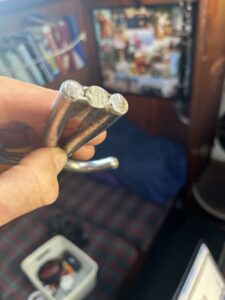
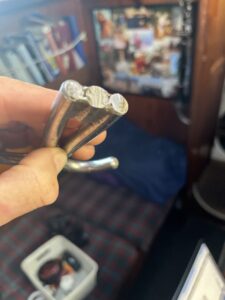
The reefing horns: The 10mm stainless steel bolt snapped like a twig
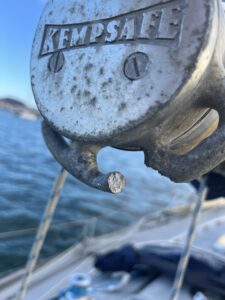
Aluminium casting broken

…and fixed with a soft shackle
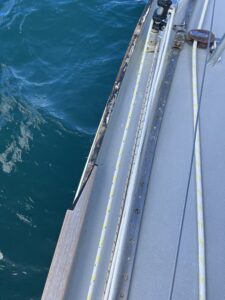
Toe rail ripped off.
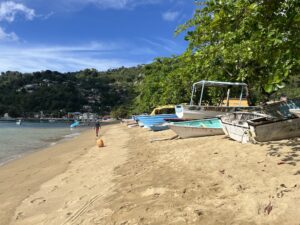
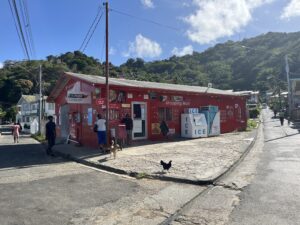
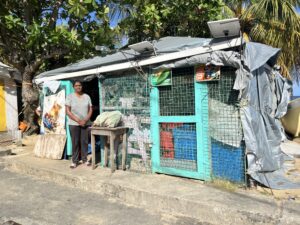

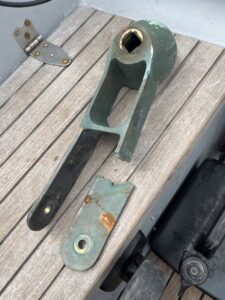
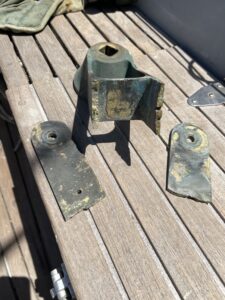
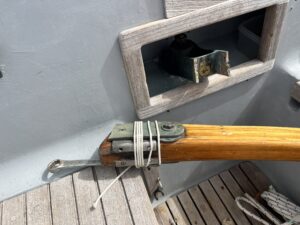
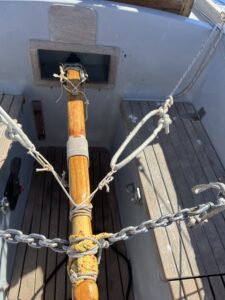
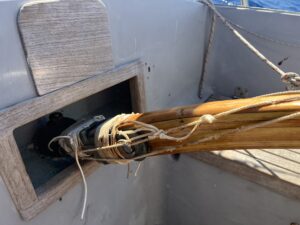
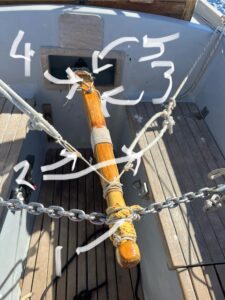

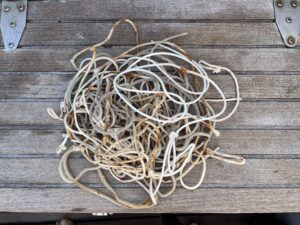
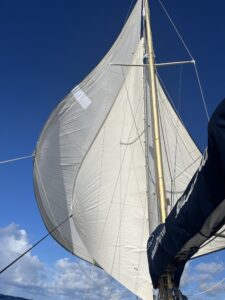

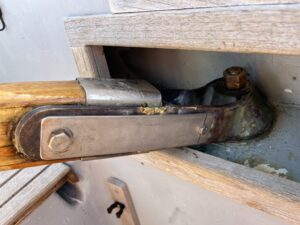
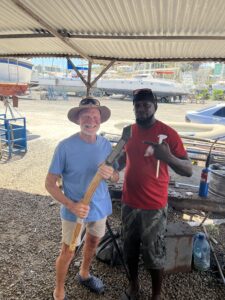
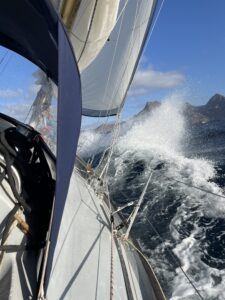
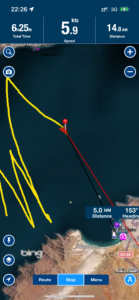
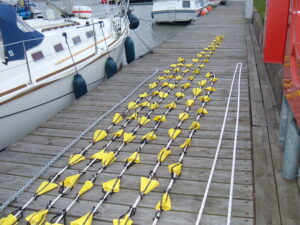
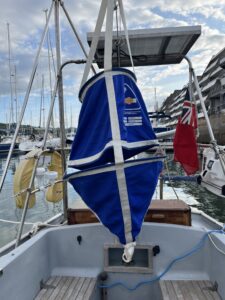

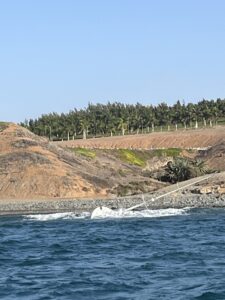
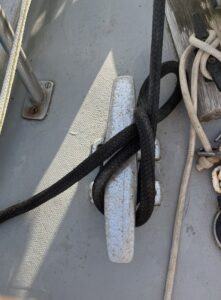
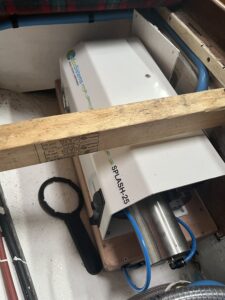
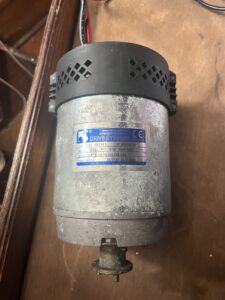
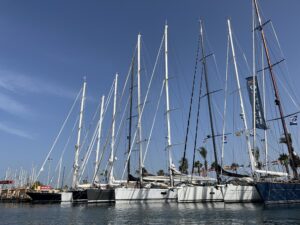
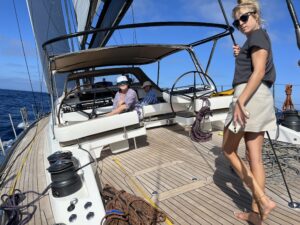
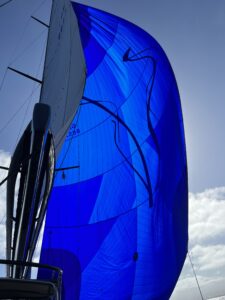
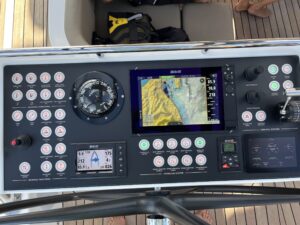
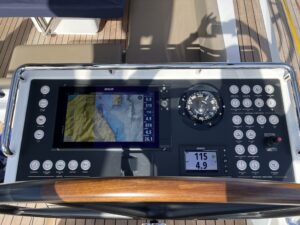
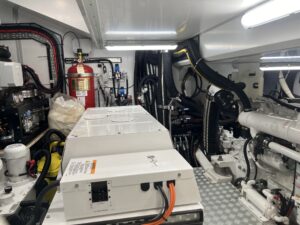
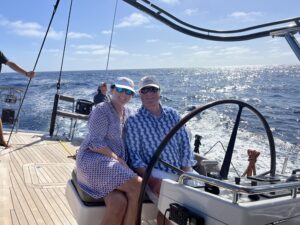
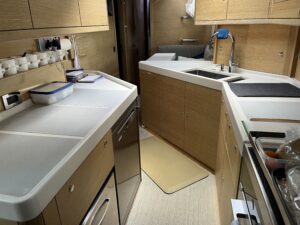

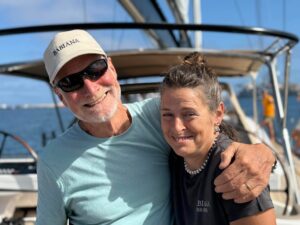







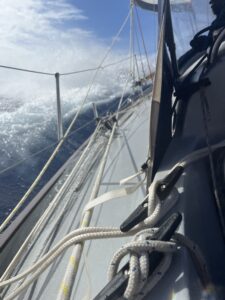
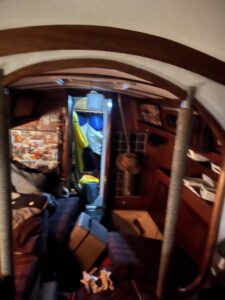
Only special people enjoy adventure…..keep going !
Sounds delightful….my wife would hate it!
Have to make a slight correction. We didn’t sail on a reach from Barbados but like John hard on the wind from Grenada. Only had to tack once though and it was daylight!
And despite the form filling it was delightful – right?
Tom
Apologies for thinking you would take the easy path!
Great to read your very entertaining and informative articles! Many thanks, Simon and Georgette
Very humourously written as ever, John!
Great post JP. One of my Moody 422 boats is on the hard in PYS Trinidad
Thanks, for another place to put on my bucket list.
I am going to add this place to my bucket list of places to sail to!
Amazing have fun.
Lovely read, as always x